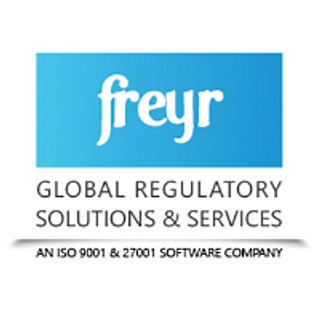Labeling Requirements for Daily Chemicals in China
- Freyr Global Regulatory Solutions
- Sep 11
- 2 min read
China Daily Chemical Product Labeling Regulations – Summary & Compliance Guide
What Are Daily Chemical Products?
These are consumer-use chemical items used in personal care and household settings, including:
Personal Care: Shampoo, toothpaste, soaps, deodorants, hand sanitizers
Household Use: Detergents, disinfectants, fabric softeners, cleaners
Mandatory Label Elements (Based on GB/T 5296.1-2012 and relevant standards)
Label Component | Details / Notes |
Product Name | Full name, brand, and model/type/grade |
Manufacturer Info | Name and address (may be waived for imports) |
Importer / Distributor Info | Full names and addresses (required for imported products) |
Country of Origin | Mandatory for imports |
Production License No. | May be exempted for imports |
Net Content | In weight (g/kg), volume (ml/L), or quantity (units) |
Date & Shelf Life | Either: Production date + shelf life or Batch number + expiration date |
Ingredients / Active Substances | Especially for cosmetics and products with active chemical components |
Instructions for Use | Method, scope, precautions, recommended usage, etc. |
Storage & Warning Info | Including vulnerable groups, disposal instructions, flammability, etc. |
Certification Marks | As applicable (e.g., CCC mark, eco-labels) |
Labels must be printed in simplified Chinese, be durable, clearly visible, and legible.
Instructions for Use & Warning Labels – Critical Focus Areas
China pays special attention to usage instructions and warning labels. These must:
Indicate correct use, storage, and disposal methods
Include foreseeable risk warnings (e.g., “Avoid contact with eyes”, “Keep out of reach of children”)
Address environmental risks and resource-saving tips
Not rely on consumer behavior to compensate for poor design
Label Format & Visibility Standards
Use Chinese only (no foreign languages unless permitted with Chinese translations)
Position labels in a conspicuous area of the product
Ensure appropriate font size and contrast
Avoid misleading or exaggerated claims, fake certification marks, or false visuals
China Daily Chemical Labeling Compliance Checklist
Task | Requirement |
✔️ | Product label in Simplified Chinese |
✔️ | All mandatory information included (product info, content, manufacturer/importer) |
✔️ | Clear usage and safety instructions present |
✔️ | No misleading graphics or claims |
✔️ | Net content in metric units |
✔️ | Valid production date / shelf life / batch number |
✔️ | Ingredient list included if required |
✔️ | Local distributor/agent details listed for imported products |
✔️ | Conformance to GB/T 5296.1-2012 & specific product standards |
✔️ | Translations reviewed by native regulatory experts or compliance consultants |
Additional Considerations
Product Notification or Registration: Certain chemical products may require pre-market registration or filing with Chinese authorities (e.g., disinfectants, cosmetics).
Substance Compliance: All ingredients must align with China’s Inventory of Existing Chemical Substances (IECSC) and applicable safety standards.
Local Agent: Importers must often appoint a local Chinese agent to help with documentation, labeling, and communication with regulatory authorities.
How Freyr Can Help
Freyr provides comprehensive support for:
Label Review & Translation aligned with GB/T standards
Regulatory Gap Analysis for imported products
Product registration or filing support (e.g., cosmetics, disinfectants)
Risk Assessment & Ingredient Review
Ongoing regulatory updates and training
Final Takeaway
Entering the Chinese market for daily chemical products requires strict adherence to local labeling and safety standards. Labels are not just informational—they are legal documents in China, and non-compliance can result in product recalls, import rejections, or fines.
By ensuring your labels are:
Fully compliant
Translated correctly
Technically accurate
And tailored to Chinese regulatory expectations,
You’ll avoid regulatory pitfalls and enhance consumer trust and brand success.







Comments